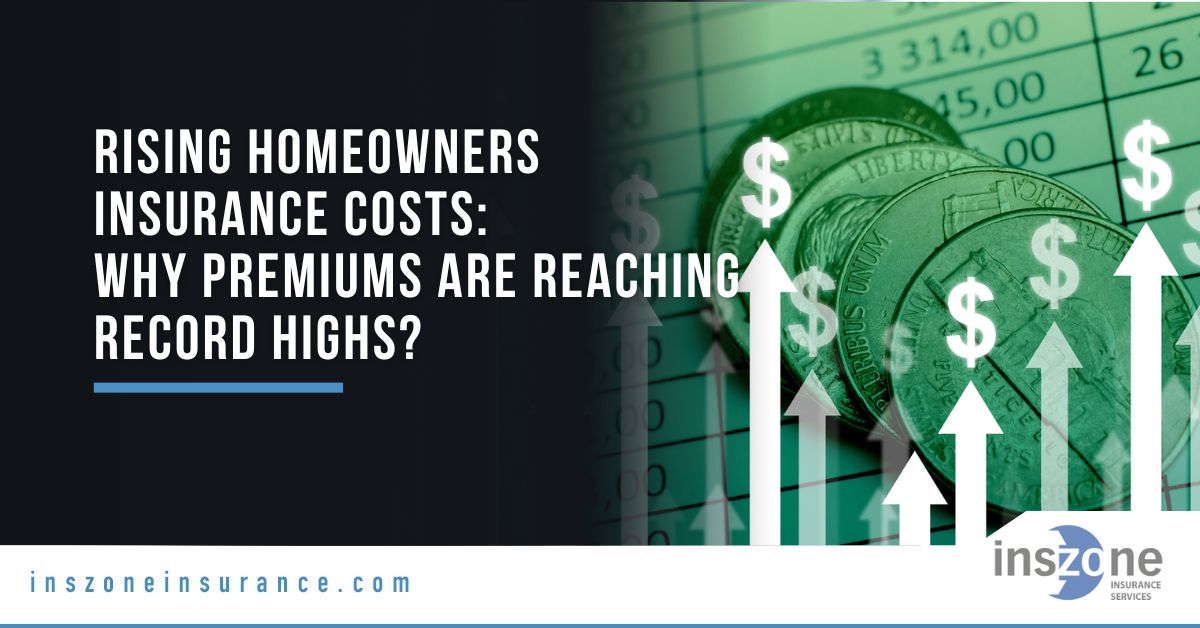Table of Contents
- Quick Definition
- What Is Driving Homeowners Insurance Costs Higher?
- What Do Current Averages Look Like?
- Where Are Insurance Premiums the Highest in 2025?
- Are Insurers Leaving or Scaling Back in Certain States?
- Who Is Most Affected by Rising Rates?
- How Can Homeowners Lower Their Insurance Premiums?
- What Does This Mean for the Insurance Industry?
- State-Specific FAQs
- Sources and Further Reading
Homeowners insurance protects your home and belongings and covers liability for certain accidents. In 2025, premiums continue to rise due to severe weather losses, higher rebuilding costs, and tighter underwriting in high-risk areas.
What Is Driving Homeowners Insurance Costs Higher?
- Climate & extreme weather: A U.S. Treasury study finds costs are rising faster in hurricane, wildfire, flood and severe storm zones, with higher non-renewal risk in these areas.
- Higher claim severity & rebuilding costs: Inflation in materials and labor increases the cost to settle each claim.
- Underwriting pullbacks in high-risk markets: Several carriers have reduced writings or tightened guidelines where losses are acute, which can reduce competition.
What Do Current Averages Look Like?
Recent nationwide estimates place the typical annual homeowners premium at roughly $2,470–$2,802 depending on methodology and sample policy:
- ~$2,470 (Bankrate/analysis reported by Axios, July 2025)
- ~$2,802 (The Zebra 2025 Home Insurance Trends Report)
Where Are Insurance Premiums the Highest in 2025?
Based on recent state comparisons (Bankrate data summarized by Axios), several states sit well above the national average. Verified examples include:
| State | Average Annual Premium (2025) | Key Risk Drivers |
|---|---|---|
| Nebraska | ~$6,425 | Severe convective storms, hail, tornadoes |
| Louisiana | ~$6,274 | Hurricanes, wind, water-related losses |
| Florida | ~$5,735 | Hurricanes, coastal exposure; litigation history |
Are Insurers Leaving or Scaling Back in Certain States?
Insurers have tightened underwriting and reduced exposure in some high-loss regions. In California, the Department of Insurance reports a growing share of homeowners relying on the FAIR Plan (insurer of last resort), which represented about 4% of the residential market (2023) and has grown since major wildfire years. California is also implementing a strategy requiring participating insurers to write more policies in higher-risk areas in exchange for updated catastrophe modeling in rate reviews.
Who Is Most Affected by Rising Rates?
- Owners in high-risk zones: Hurricane, wildfire, flood and severe-storm corridors see higher premiums and more non-renewals.
- First-time buyers in tight markets: Higher insurance costs further impact affordability.
- Some inland hail/tornado regions: Midwestern/Plains states with frequent severe convective storms often face above-average rates.
How Can Homeowners Lower Their Insurance Premiums?
- Compare quotes regularly: Pricing varies widely by carrier and risk model.
- Adjust deductibles thoughtfully: Higher deductibles can reduce premiums but increase out-of-pocket costs at claim time.
- Mitigate risk: Roof reinforcement, impact-resistant materials, wildfire defensible space, and approved wind/hail or fire hardening can help. Ask your insurer which mitigation credits they recognize in your state.
- Bundle policies (where available): Multi-policy discounts exist, but amounts vary by insurer and jurisdiction.
- Maintain coverage accuracy: Keep your dwelling limit aligned with current rebuild costs; update renovations and safety devices on your file.
What Does This Mean for the Insurance Industry?
The market is realigning to climate and catastrophe risk. Carriers are refining catastrophe models, shifting concentrations of risk, and relying on reinsurance. In some states, regulators and policymakers are adjusting frameworks (e.g., allowing catastrophe modeling and securing commitments to write in higher-risk zones) to stabilize availability and affordability. Agents and brokers who help clients compare options, document mitigation, and right-size coverage will be essential.
State-Specific FAQs
Q: Why are Nebraska and parts of the central U.S. so expensive?
A: Frequent severe convective storms (hail, straight-line winds, tornadoes) drive high claim frequency and roof losses, pushing averages well above national levels.
Q: What’s happening in California?
A: After years of major wildfire losses and availability challenges, California’s insurance department reports increased FAIR Plan reliance and is implementing a strategy that ties catastrophe modeling in rates to writing more policies in higher-risk areas.
Q: Are carriers really paying out more than they collect in some places?
A: Yes. For example, State Farm said that in Illinois in 2024 it paid about $1.26 in claims for every $1 in premium collected, citing severe weather and hail losses.
Q: Will rates keep rising into 2026?
A: Many analysts expect pressure to continue in catastrophe-exposed regions unless loss trends ease, mitigation scales, and/or reinsurance and regulatory frameworks stabilize pricing.
Sources and Further Reading
- Axios (Bankrate analysis): Where home insurance costs the most — and least (2025)
- The Zebra: 2025 Home Insurance Trends Report (avg ~$2,802)
- U.S. Department of the Treasury (press release): Homeowners Insurance Costs Rising & Availability Declining (Jan 16, 2025)
- Full Treasury Report PDF: Analyses of U.S. Homeowners Insurance Markets (2018–2022)
- ABC7 Chicago: State Farm Illinois losses & $1.26 paid per $1 premium
- California Department of Insurance: FAIR Plan share & growth (June 2025) and Strategy linking wildfire models to writing in high-risk areas (Aug 2025)






